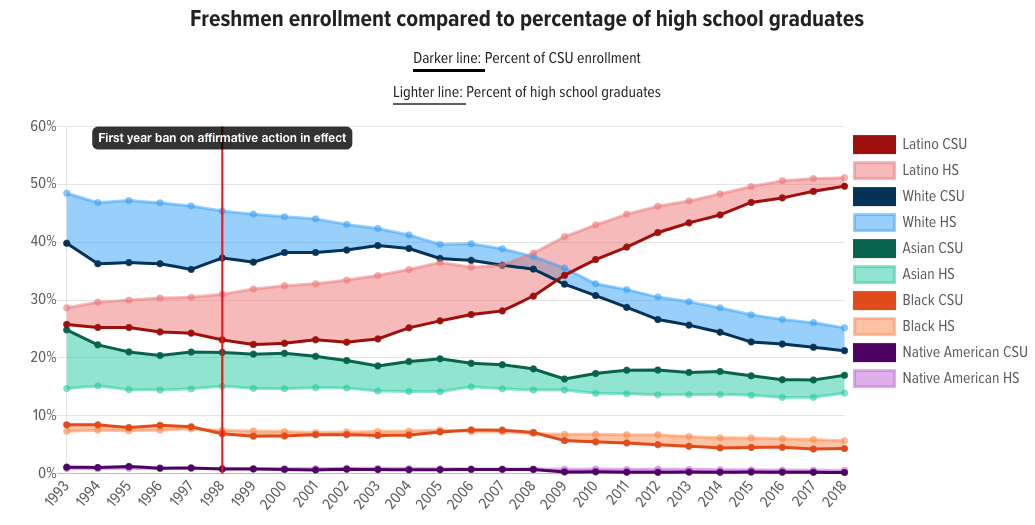In this blog post, we turn our attention to a pivotal moment in American jurisprudence, particularly with regard to the Supreme Court’s examination of affirmative action policies in higher education. This court case exposed the legal and societal ramifications of this scrutiny, highlighted the essence of the cases at hand, the potential impacts on the educational landscape, and the historical context that frames the affirmative action debate in the United States.
The crux of the Supreme Court’s evaluation lies in two significant cases that question the constitutionality of race-conscious admissions strategies employed by elite educational institutions. These legal challenges posit that affirmative action, intended to cultivate a diverse student populace, might contravene the Equal Protection Clause of the Fourteenth Amendment by instituting race-based discrimination. Advocates for the plaintiffs argue that such practices not only marginalize certain racial cohorts but also detract from the foundational meritocratic ethos of college admissions.

For decades, affirmative action has stood as a polarizing issue within the U.S., with proponents advocating for its necessity to rectify the enduring disparities that have historically curtailed access to higher education for underrepresented minorities. They argue that diversity within academic settings enhances the educational journey for all students, thereby nurturing a more inclusive society. Conversely, detractors perceive these policies as a variant of reverse discrimination, advocating for a merit-based, race-neutral admissions framework.
The implications of the Supreme Court’s decisions are profound. An adverse ruling against affirmative action might compel academic institutions to seek alternative methodologies for fostering diversity, potentially emphasizing factors such as socioeconomic status and geographic diversity, devoid of direct racial considerations. Conversely, an endorsement of affirmative action would solidify the legality of race-conscious admissions policies, sustaining them as a legitimate tool for achieving educational and societal goals.
This debate transcends affirmative action, touching upon broader societal conceptions of merit and equity within the educational sphere. It beckons a national reflection on whether a truly equitable admissions process necessitates acknowledging the historical and systemic adversities faced by certain racial and ethnic groups. Moreover, it prompts a reevaluation of higher education’s role in promoting social mobility and addressing societal inequities.

Reflecting on the recent Supreme Court decision, which sided with Students for Fair Admissions, we observe a definitive moment in the landscape of American higher education and its approach to diversity. This landmark ruling signifies a profound shift, mandating that colleges and universities across the nation reconsider their admissions policies in the absence of race-conscious affirmative action. The Court’s decision underscores a critical juncture in our societal dialogue on equity, compelling educational institutions to devise new strategies that achieve diversity without directly considering race.

Affirmative action is certainly a polarizing issue, as it is almost near impossible to have a college admissions process that considers the individual without also considering that individuals race. Colleges adopted holistic reviews of applicants in order to better find candidates that exhibit the values and strengths that the institution upholds, beyond just the ability to get good grades. They argue that they want people not robots. Because of their practice of engaging holistic reviews, I find it unlikely that colleges will suddenly stop exercising affirmative action, they’ll likely continue to do it in a more subtle, less obvious way. So while the Supreme Court may have ruled in favor of the Students for Fair Admissions, we have yet to see what impact the ruling will have in practice.
This post addresses a very interesting and important topic which is highly relevant today. I think there is a lot to expand on regarding affirmative action and it could be a great topic for the upcoming project. I think you could expand a little bit more on what you explain in the post regarding the historical justification for affirmative action and such. Also, I was a little bit confused looking at the graph you included, so a brief explanation there would have been helpful. Overall great job!
I really liked reading about this! I think the issue of affirmative action is complex, and there are pros and cons to each side. I think that while many complain affirmative action is unfair, it is important to take into account that people of color don’t always have the same opportunities to build their college applications compared to others. You can also see in this graph that it doesn’t impact every minority group the same, and that is also something that should be taken into account when looking at affirmative action. I would love to learn more about how each side feels about affirmative action and specific colleges severely impacted by affirmative action.